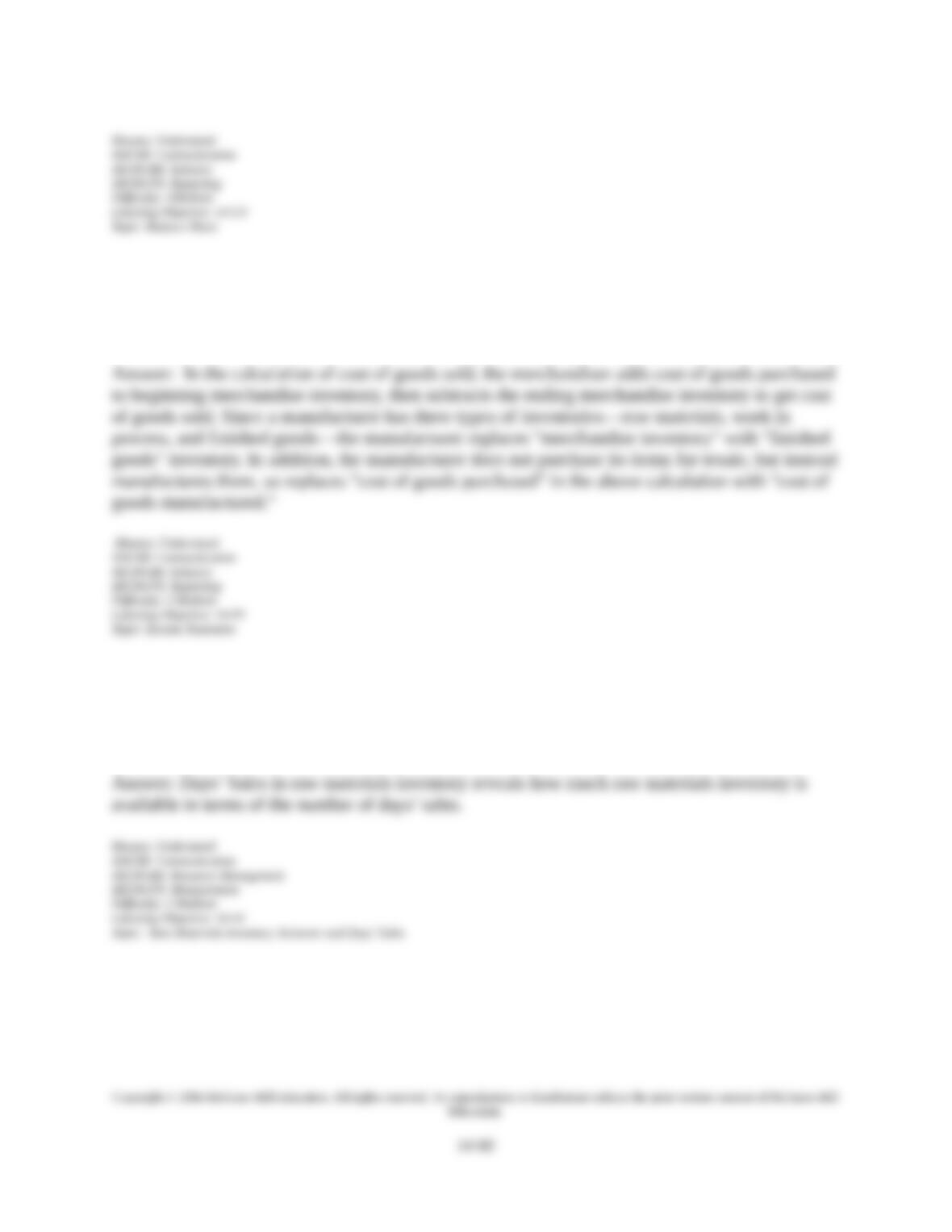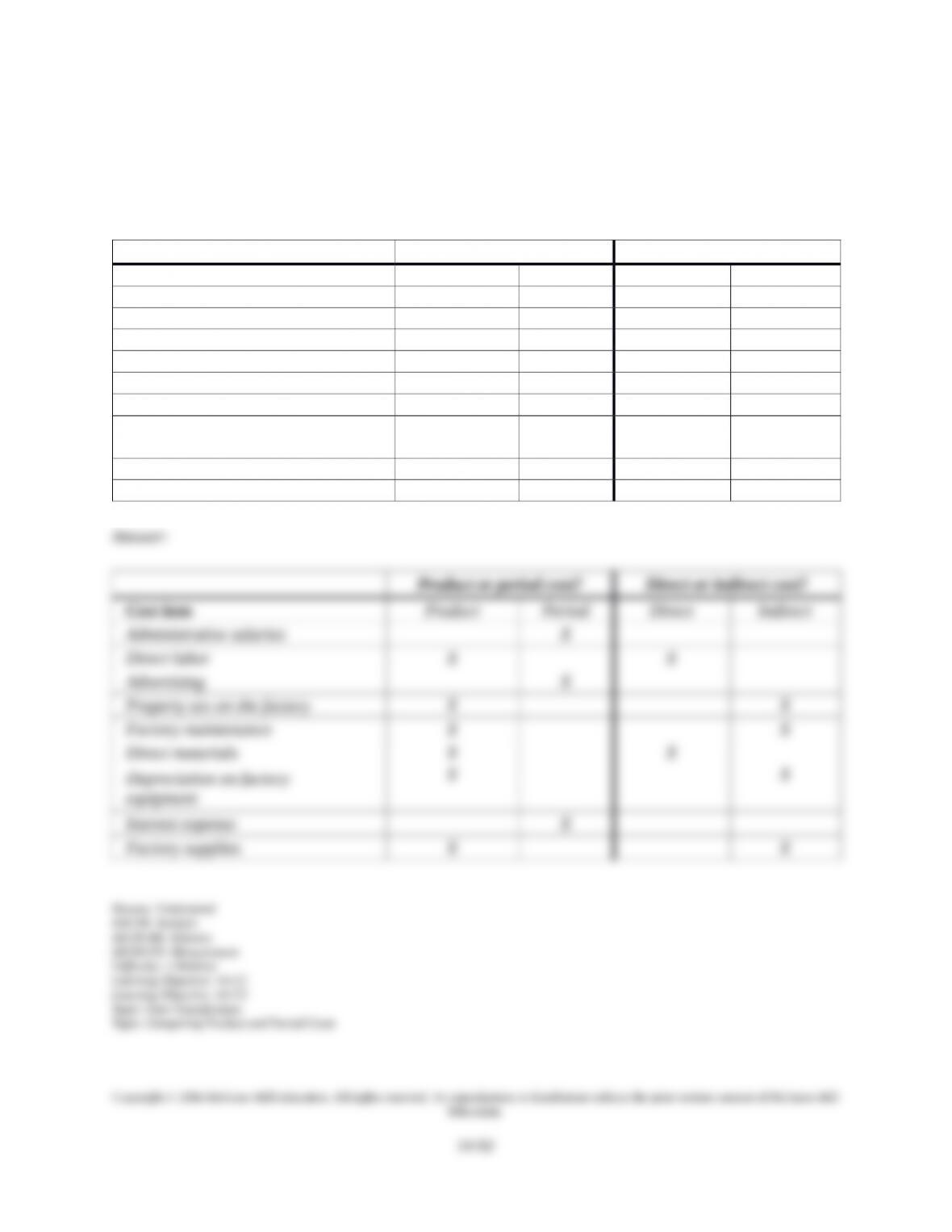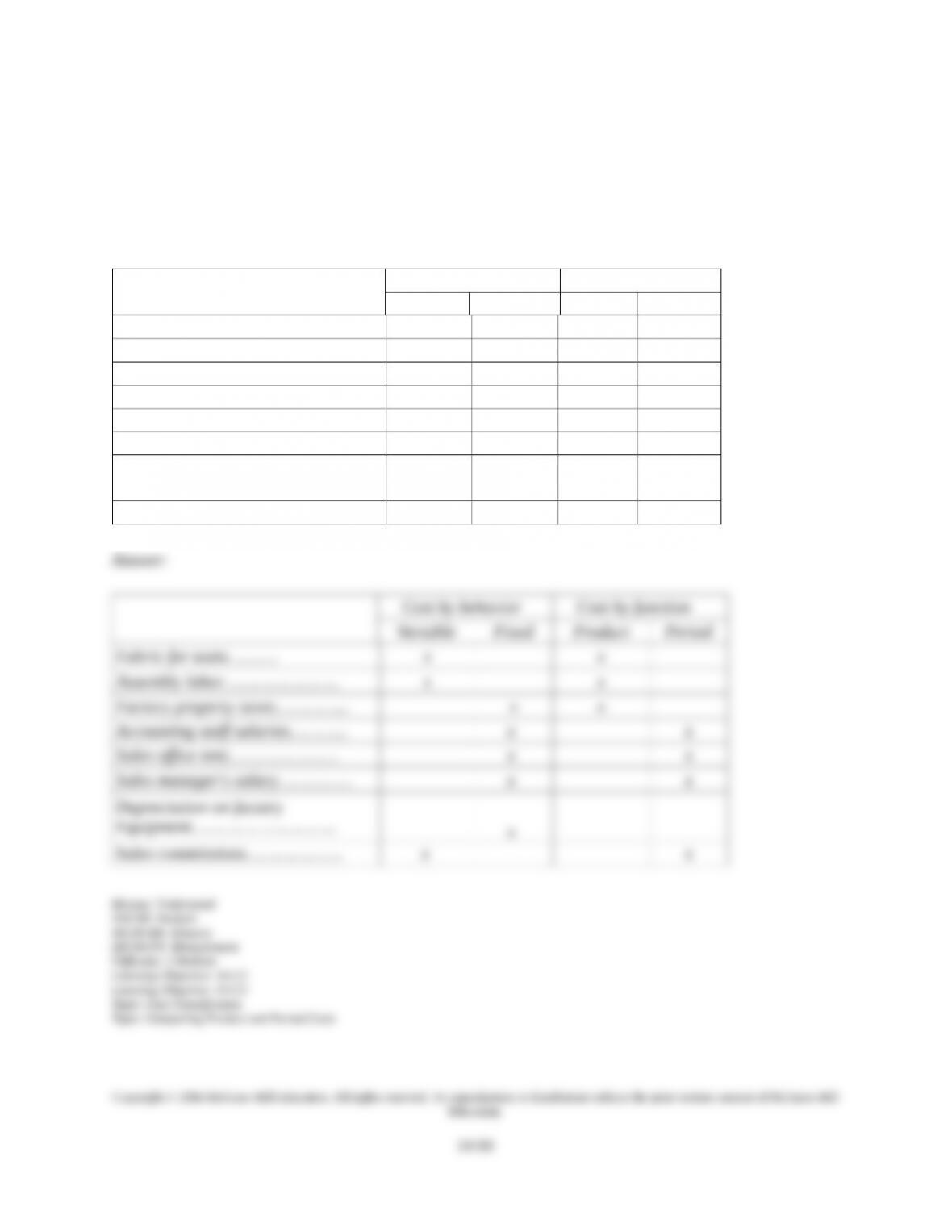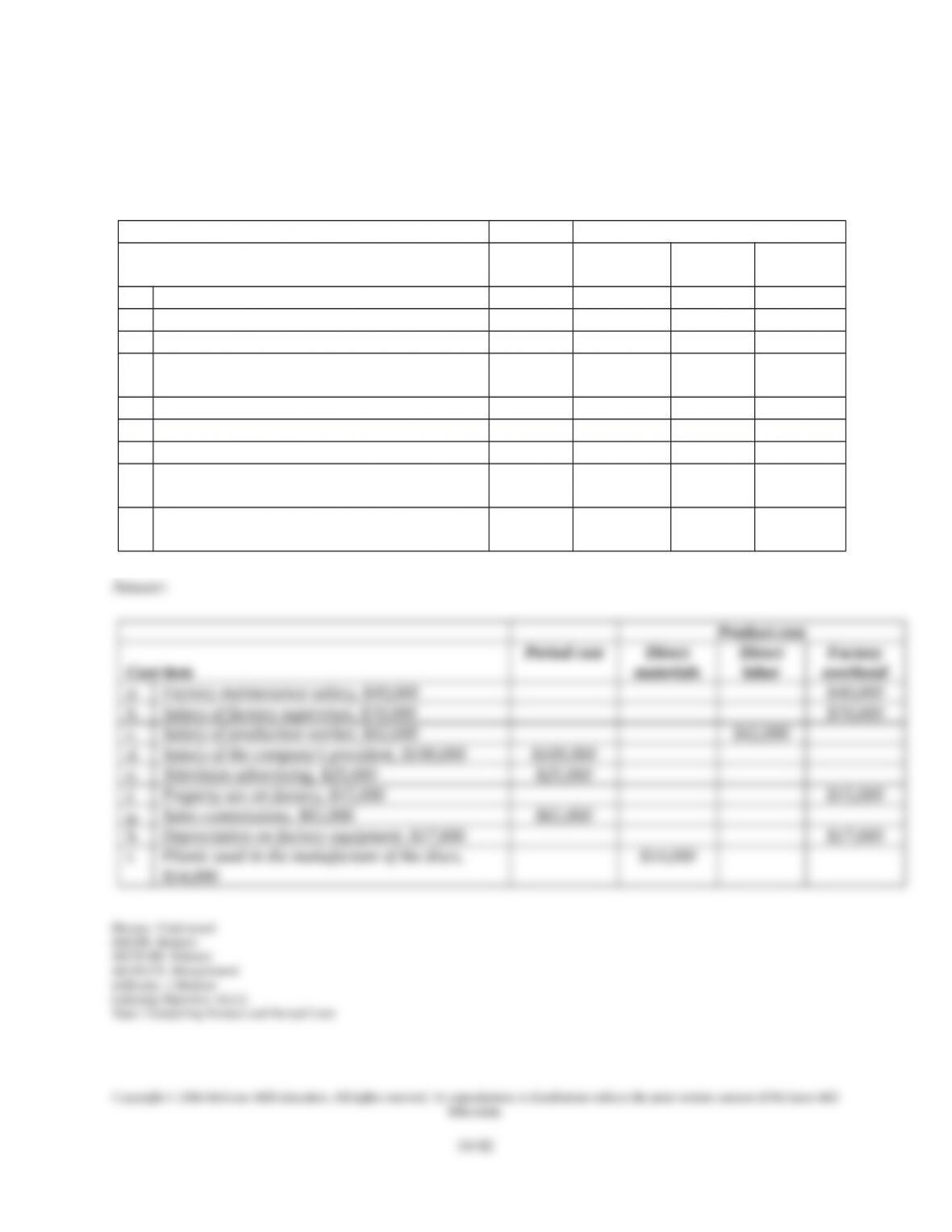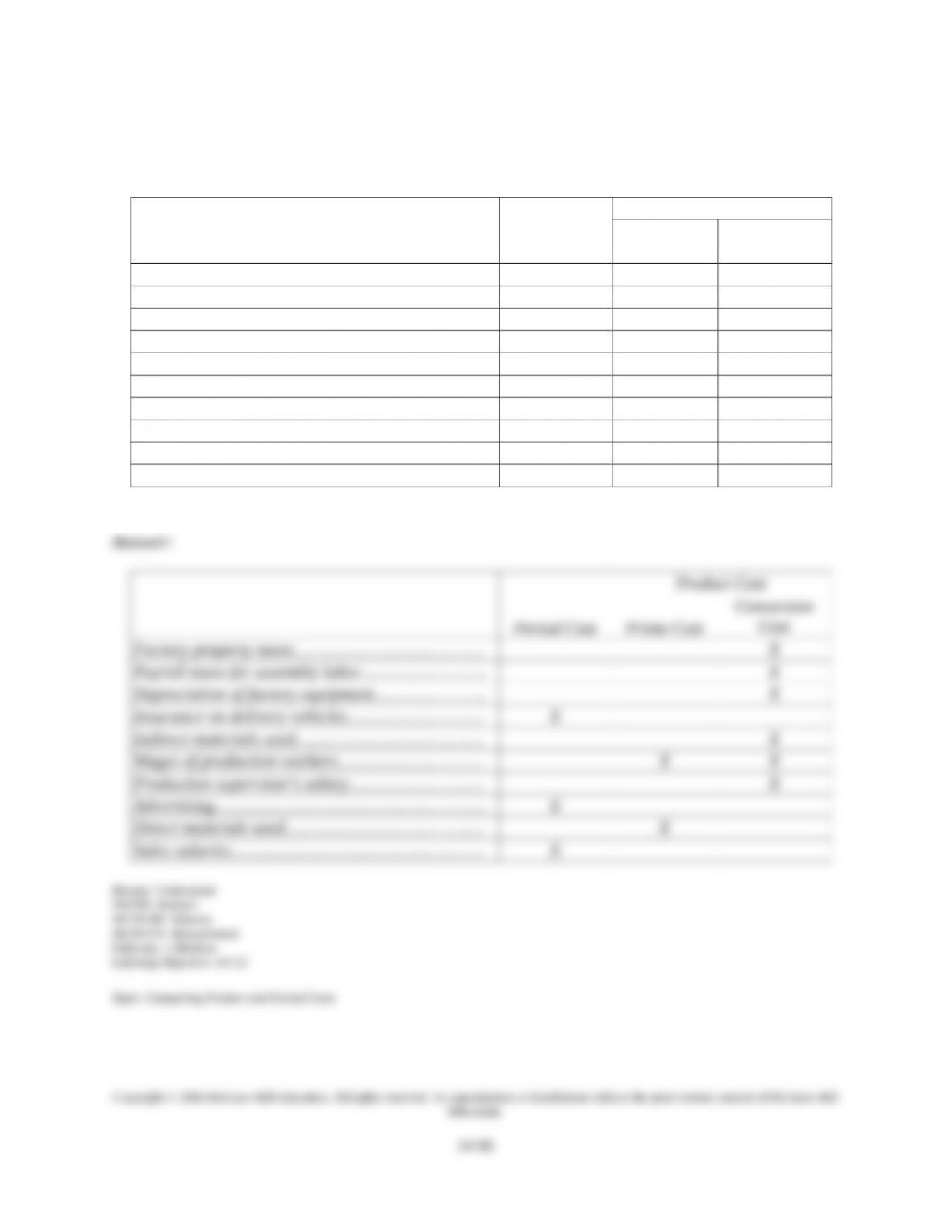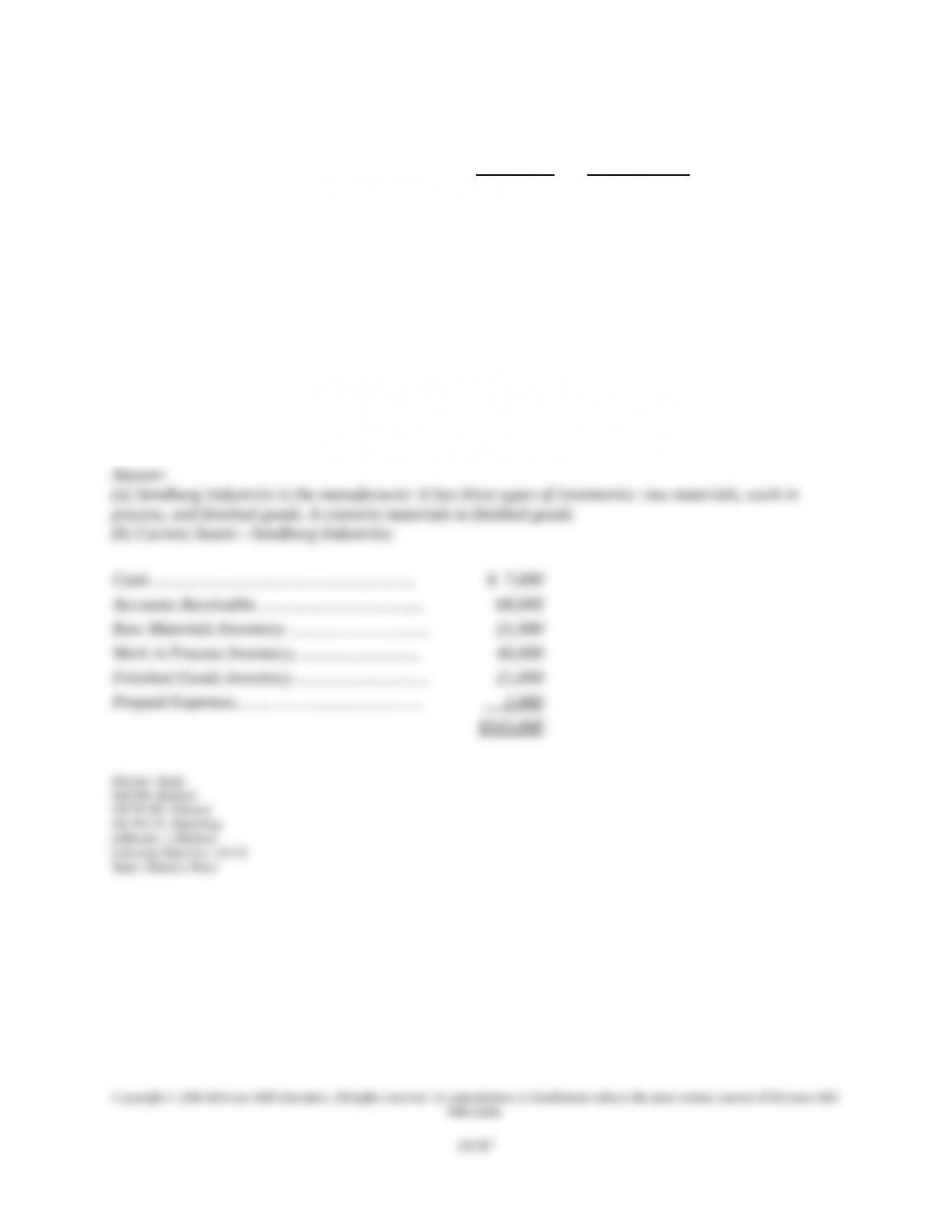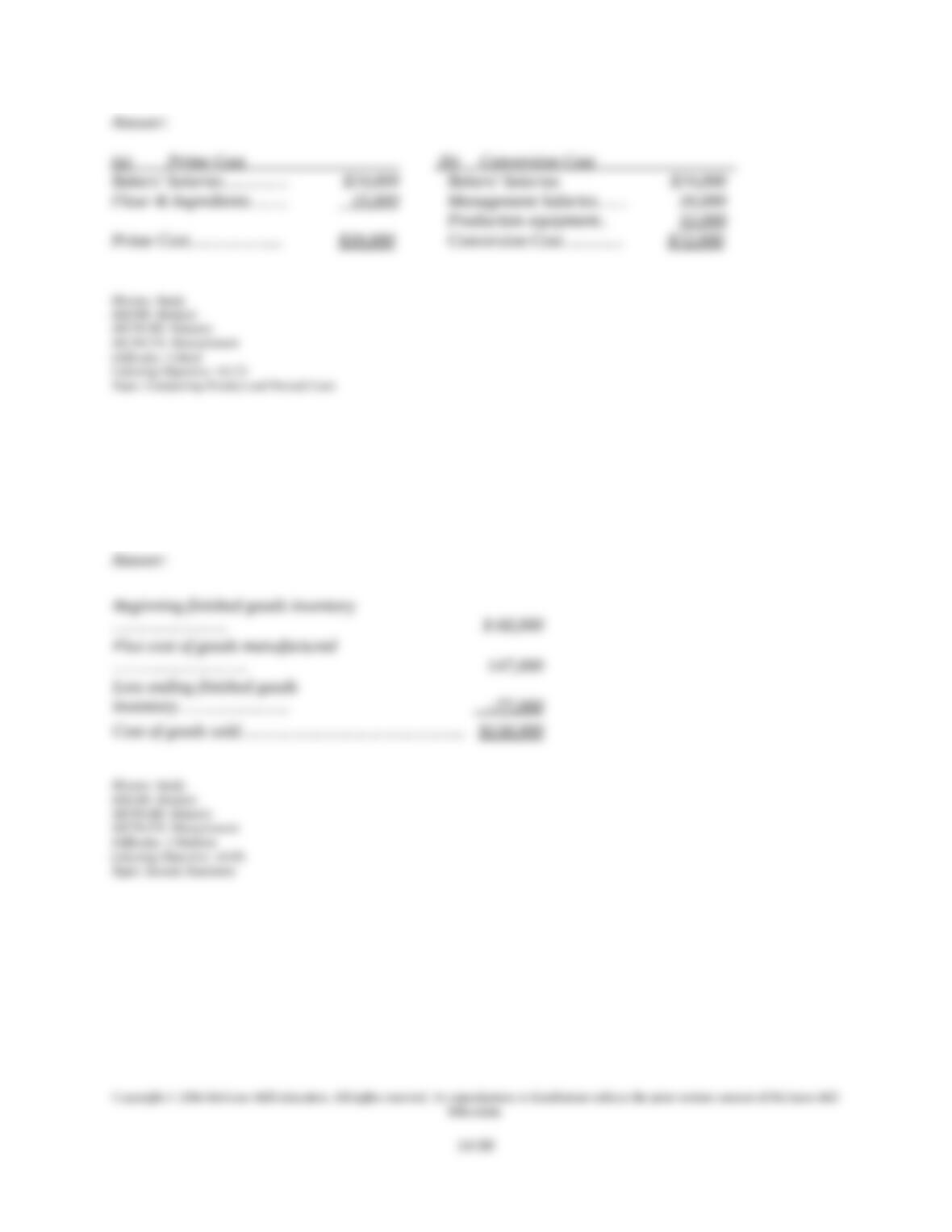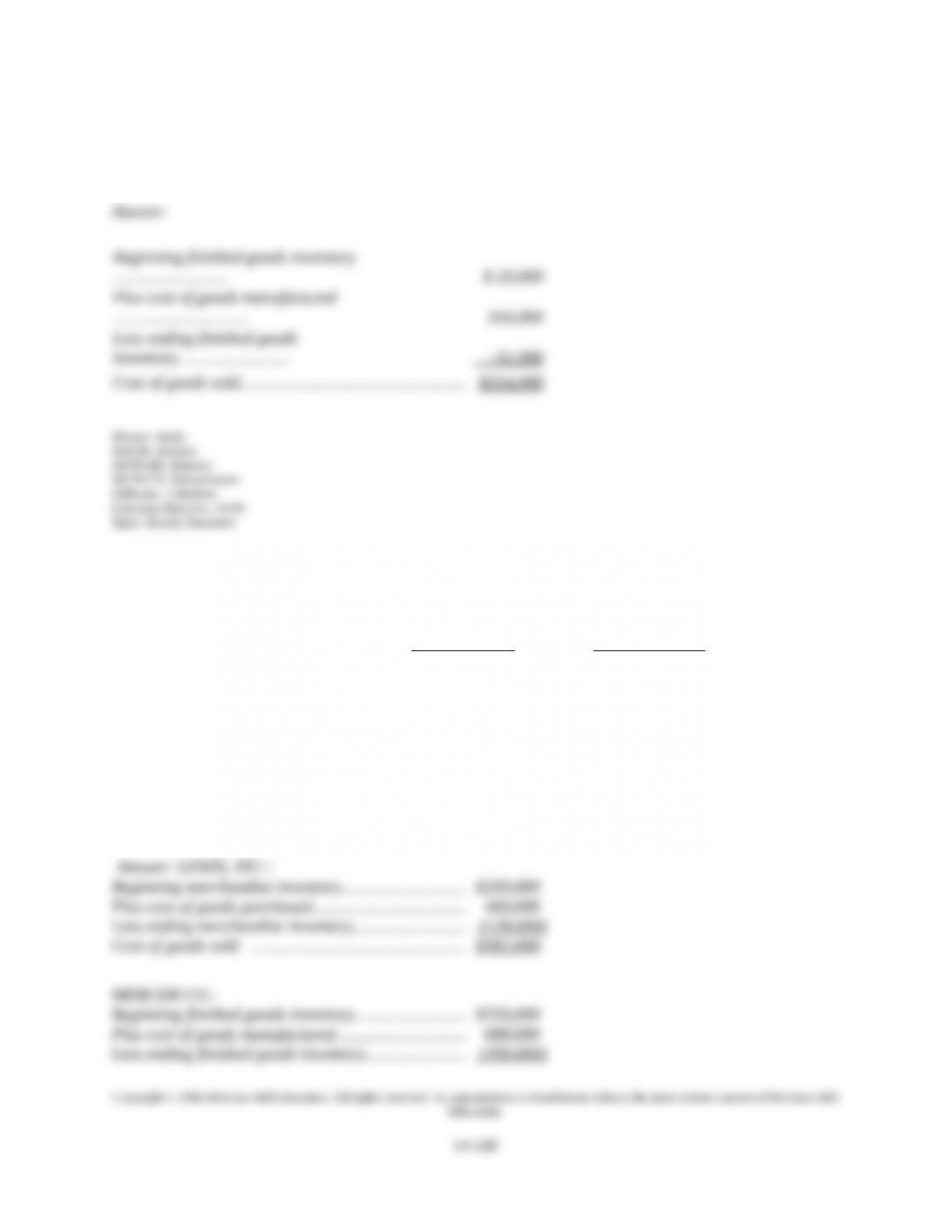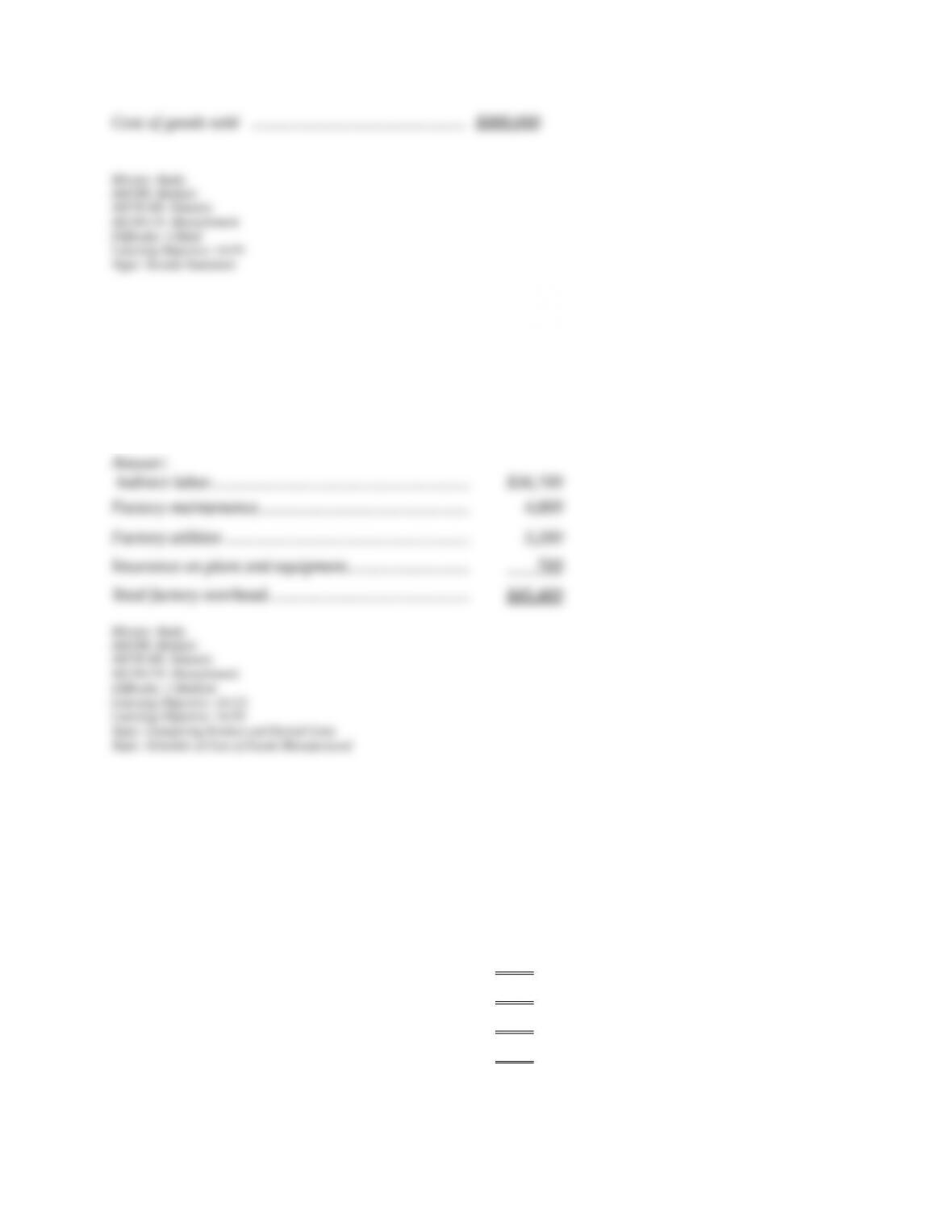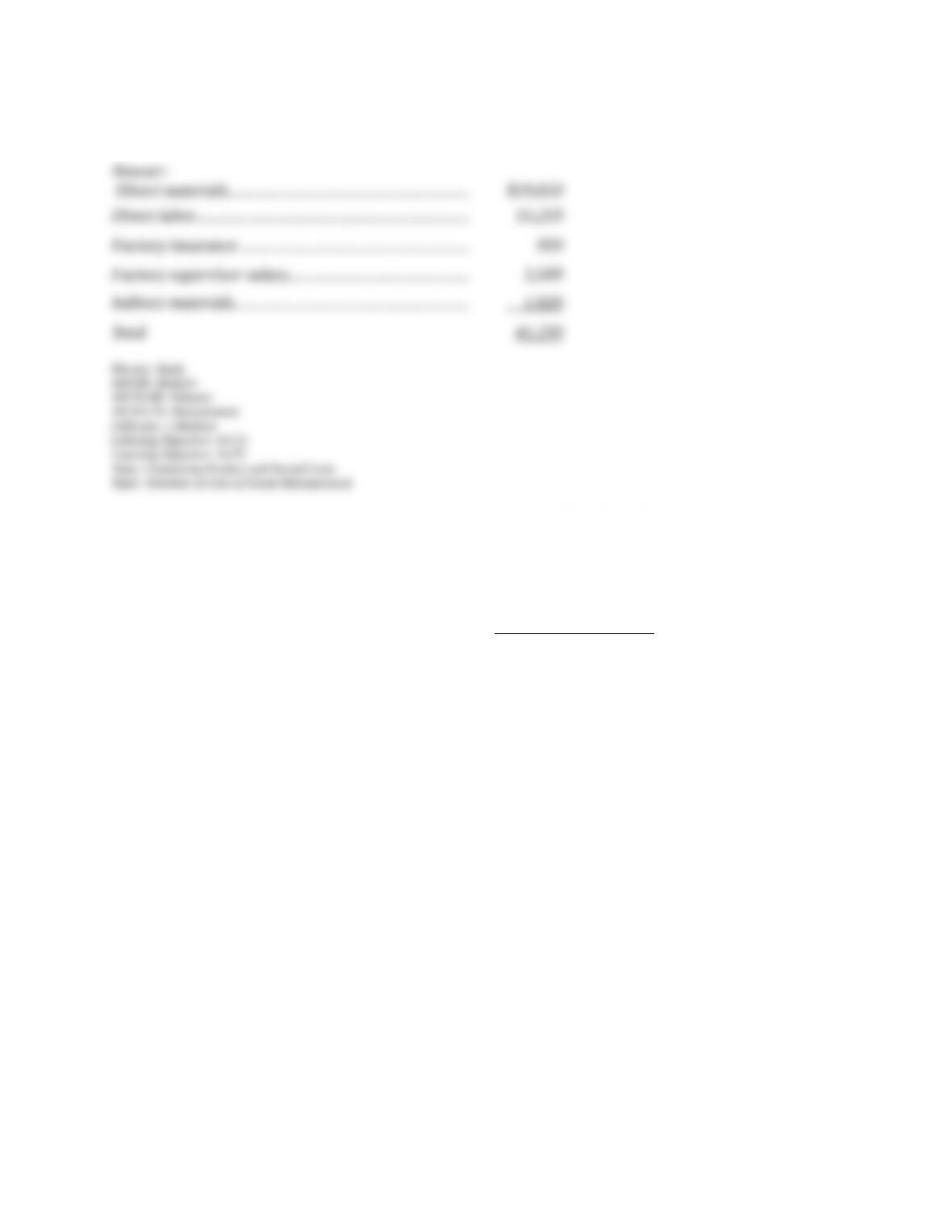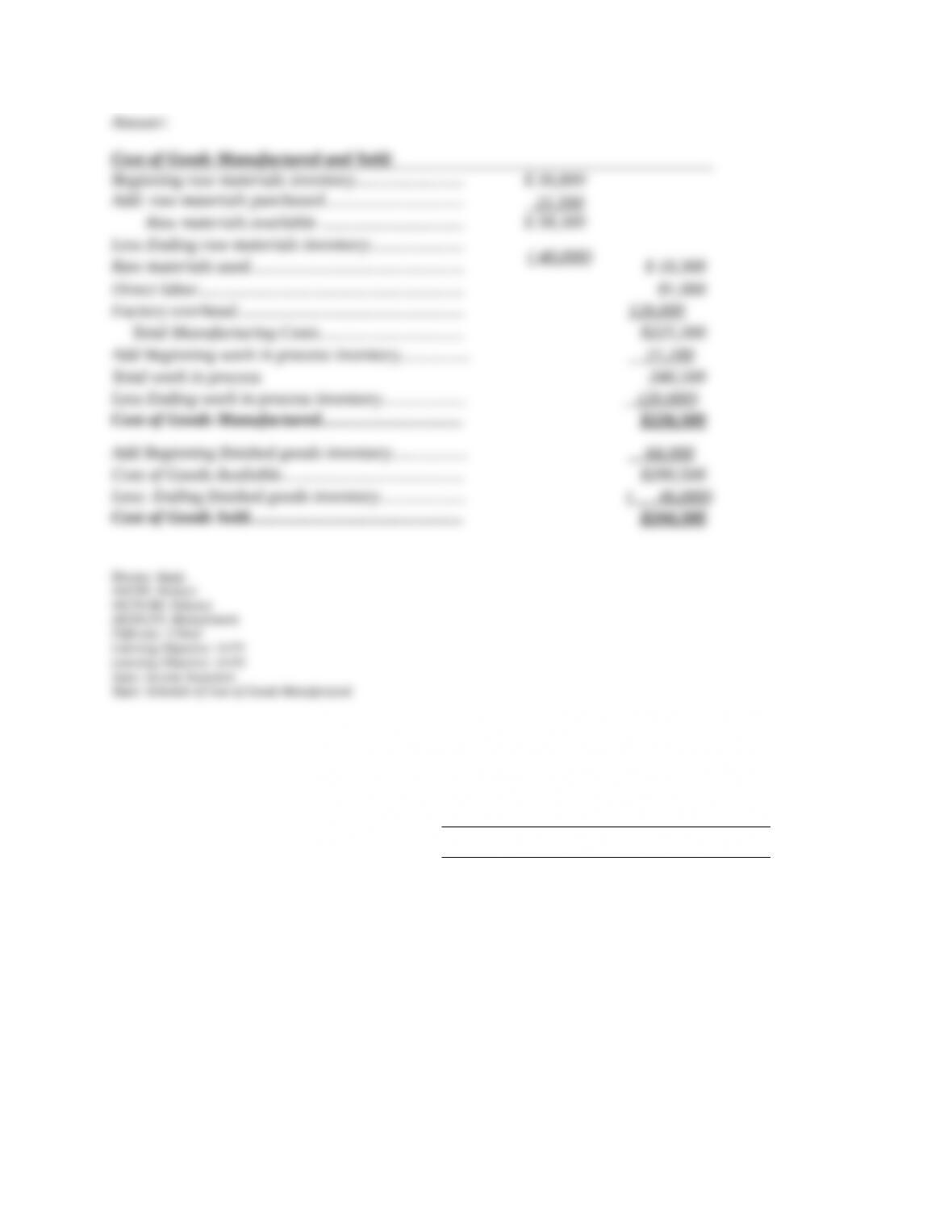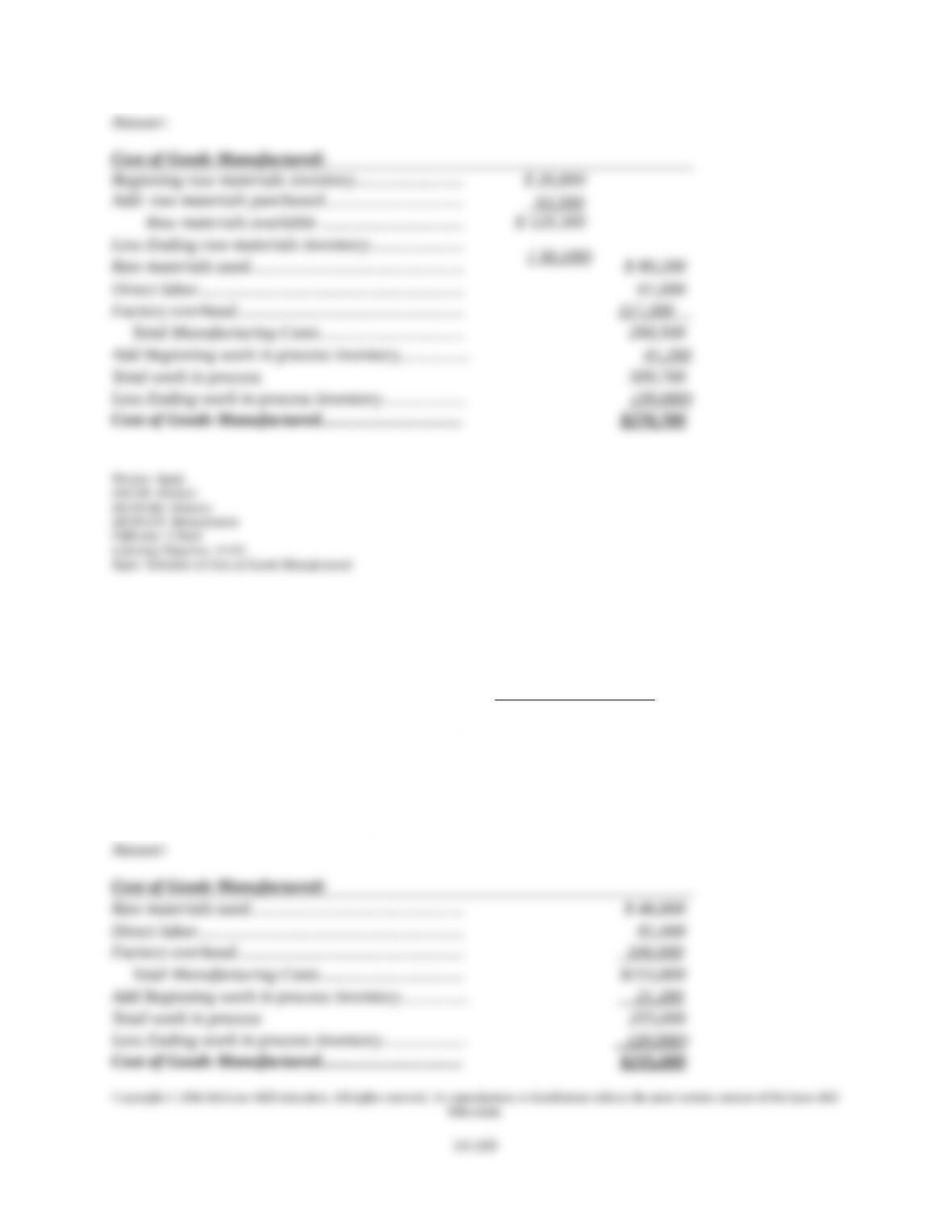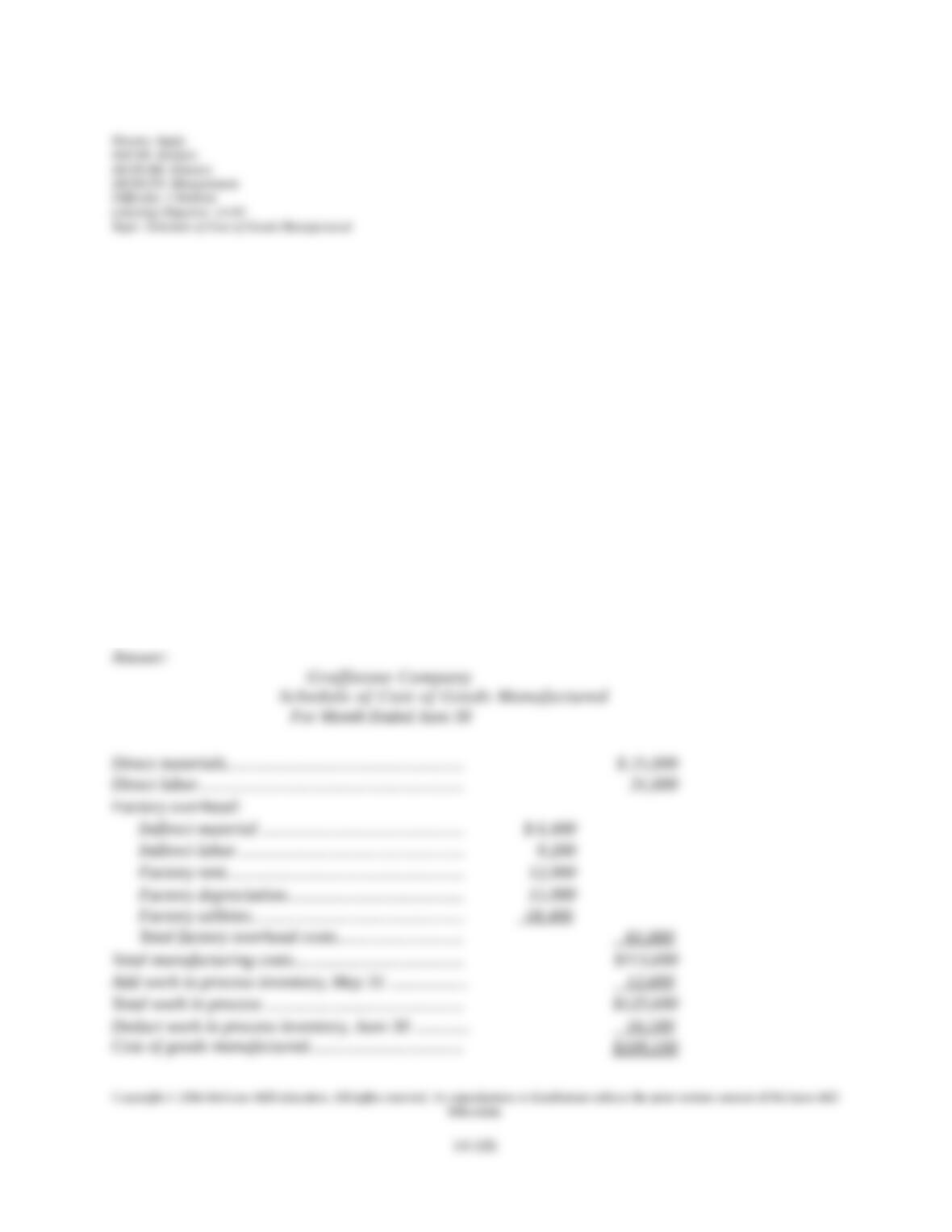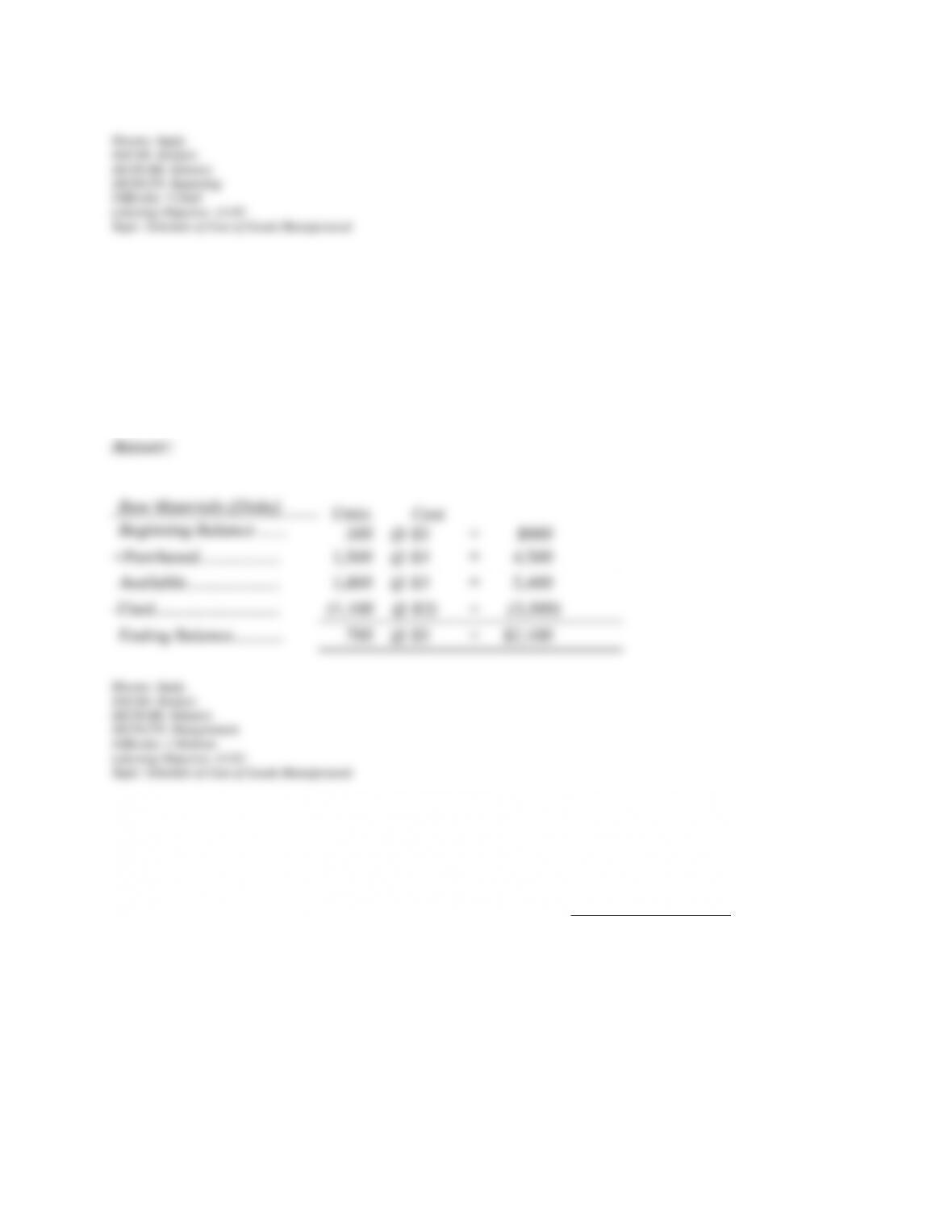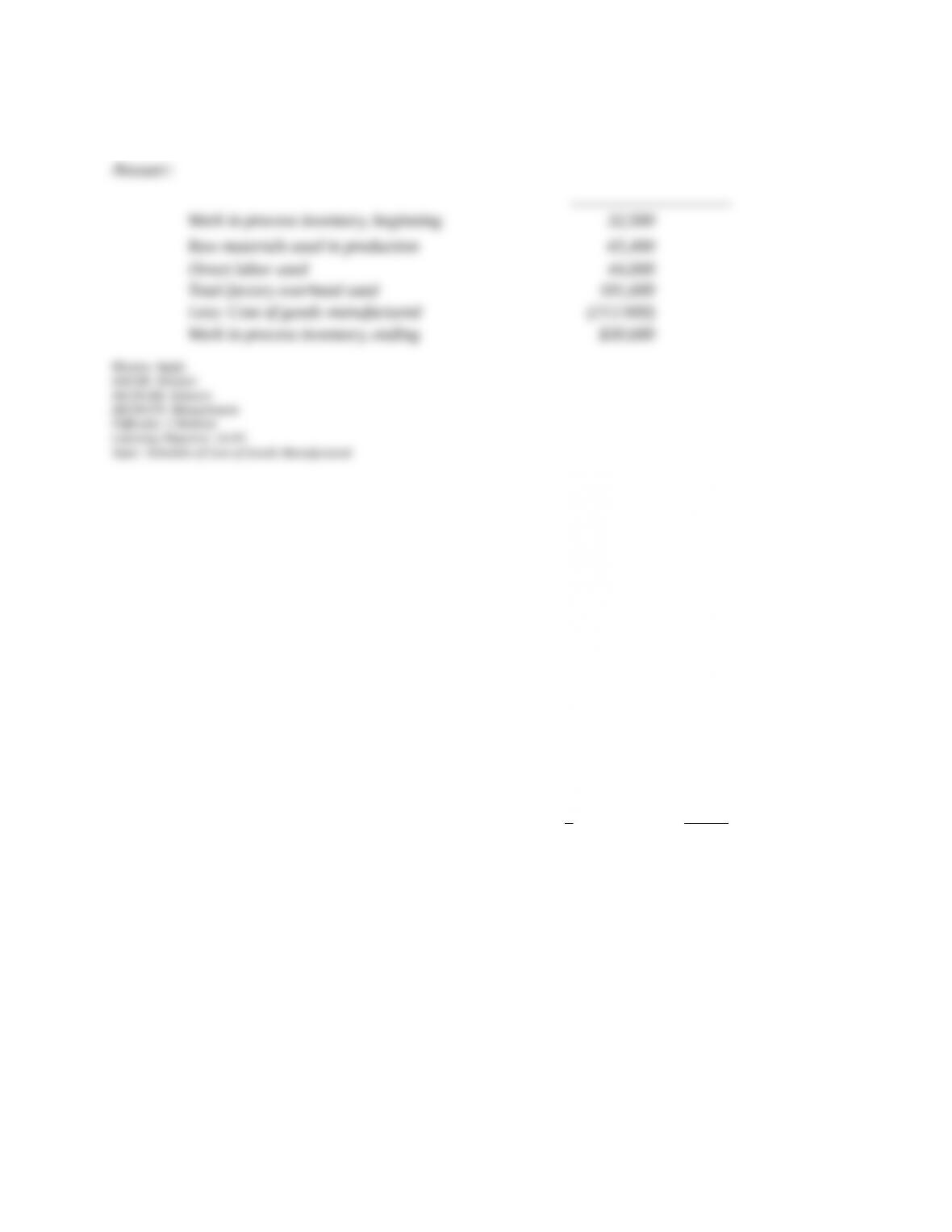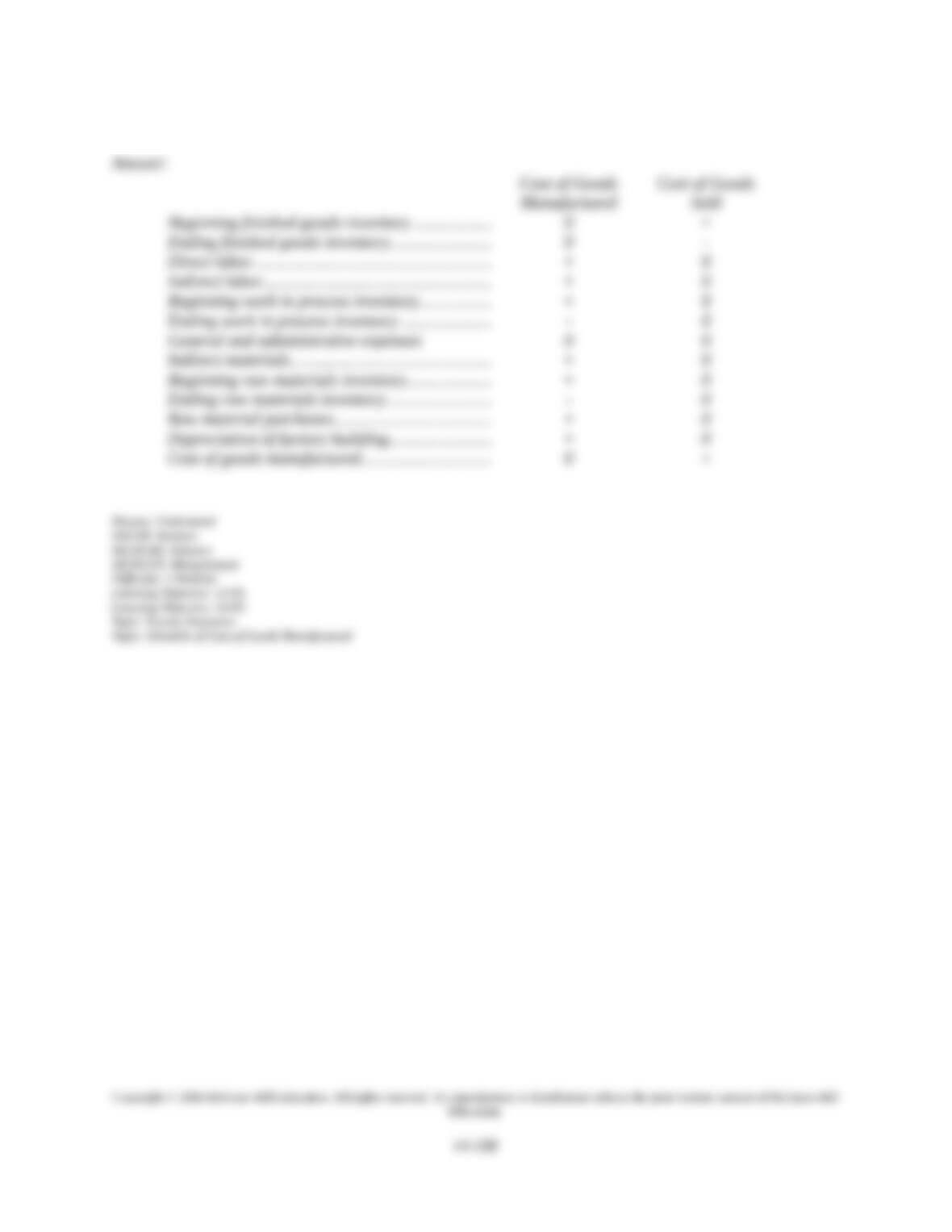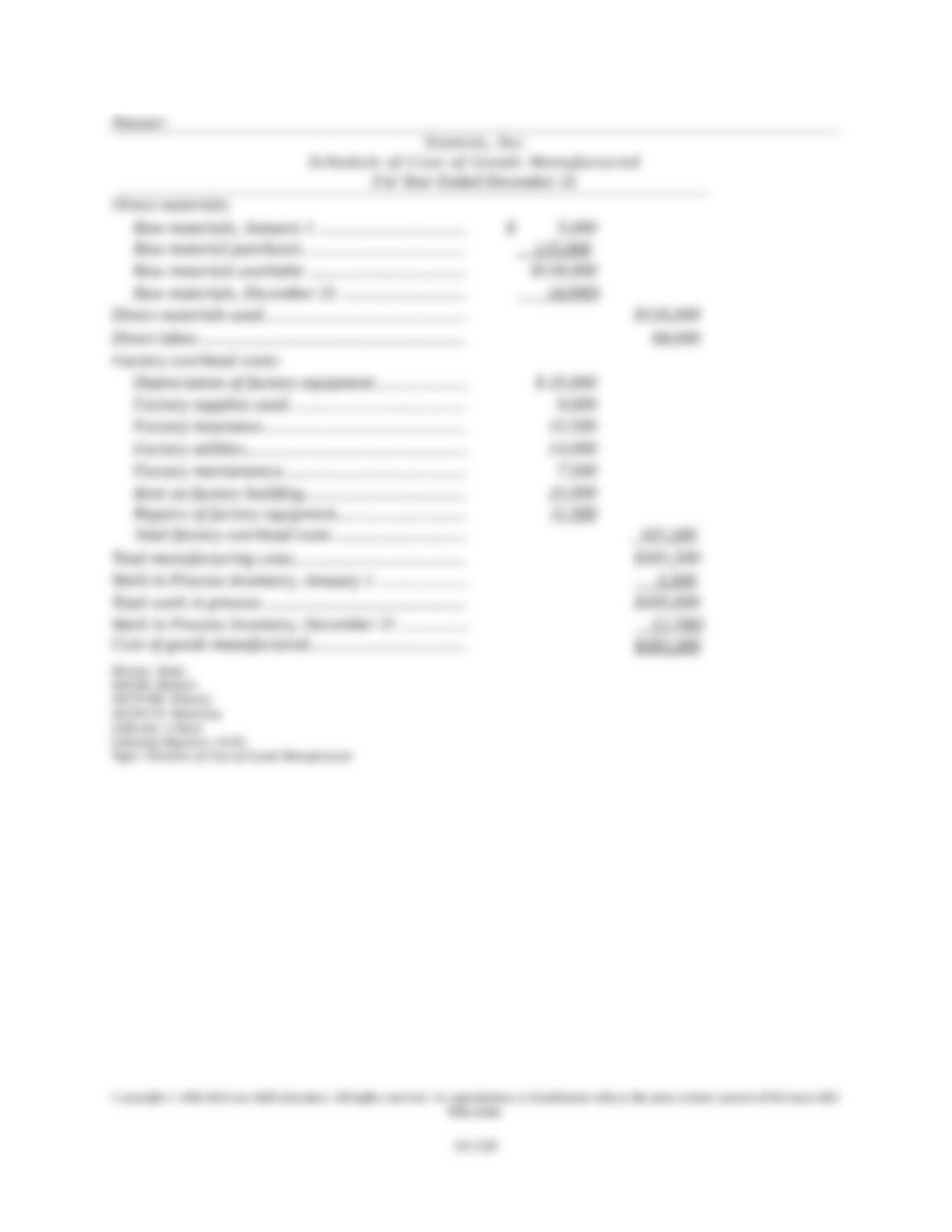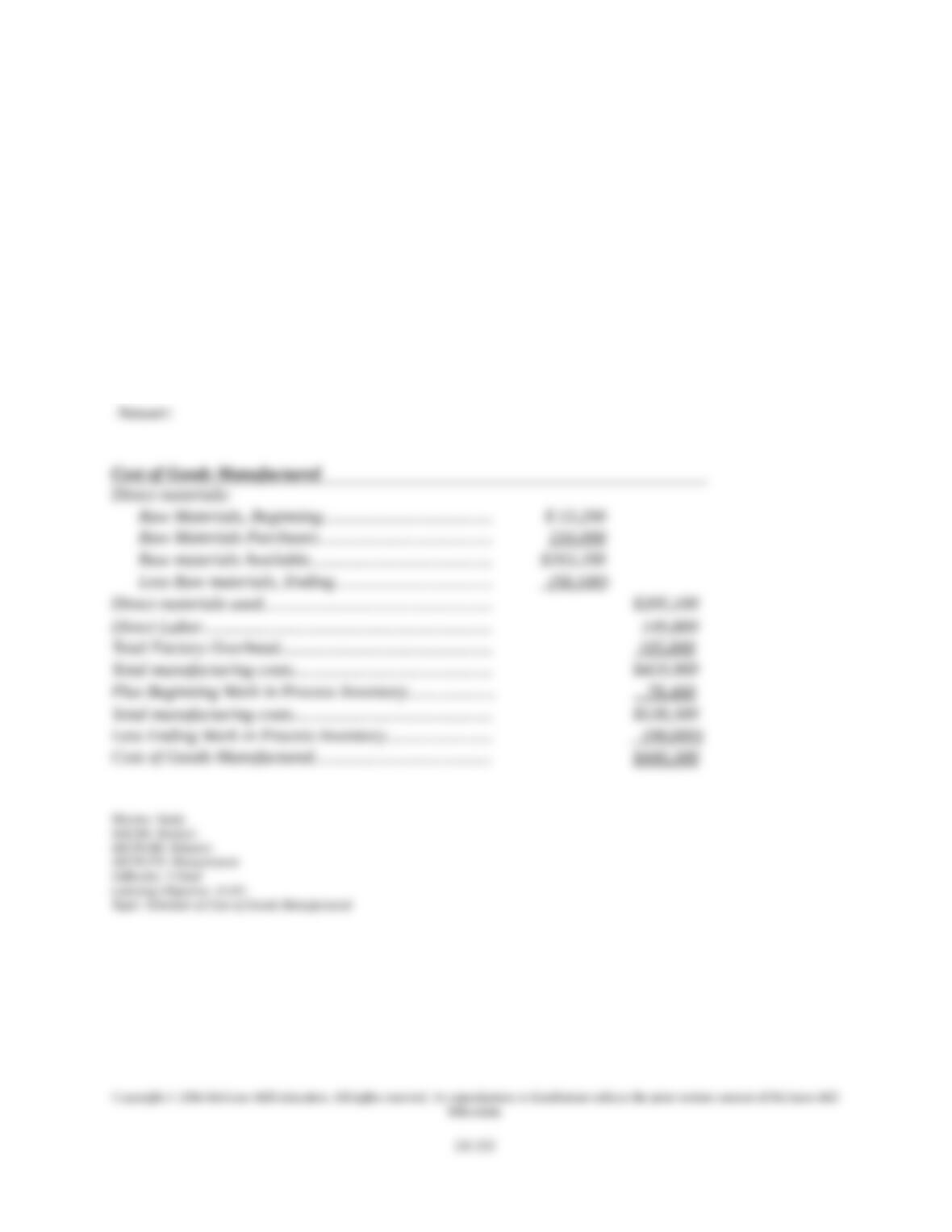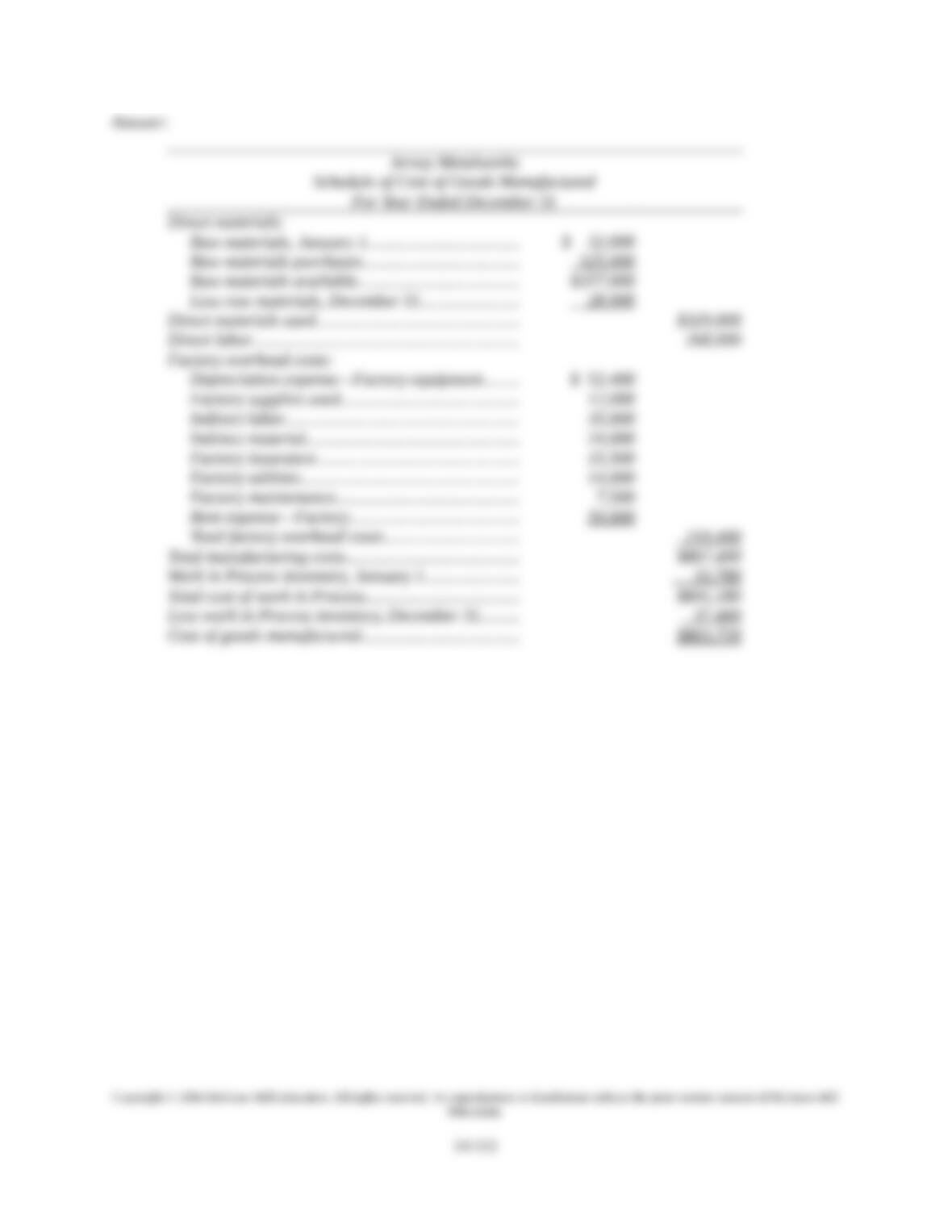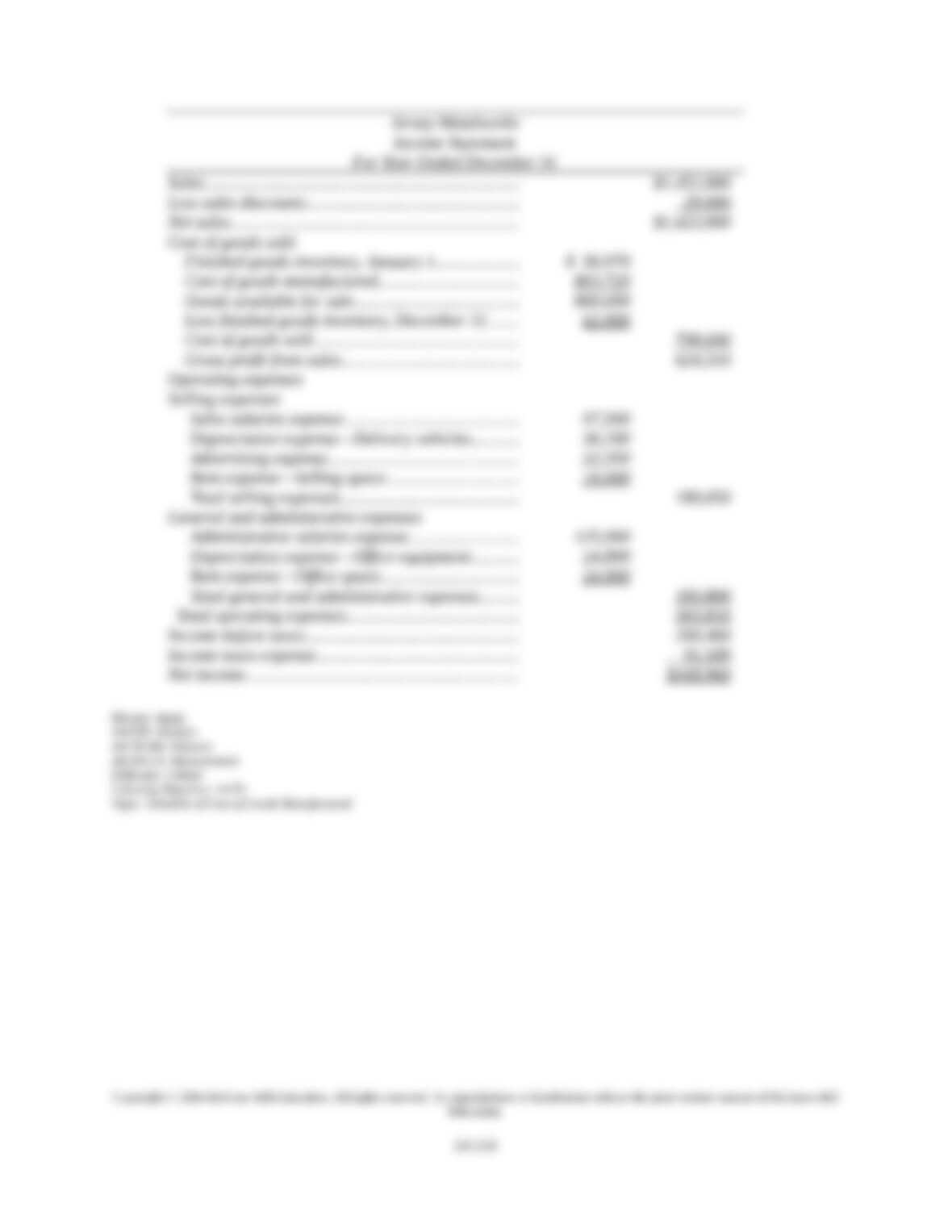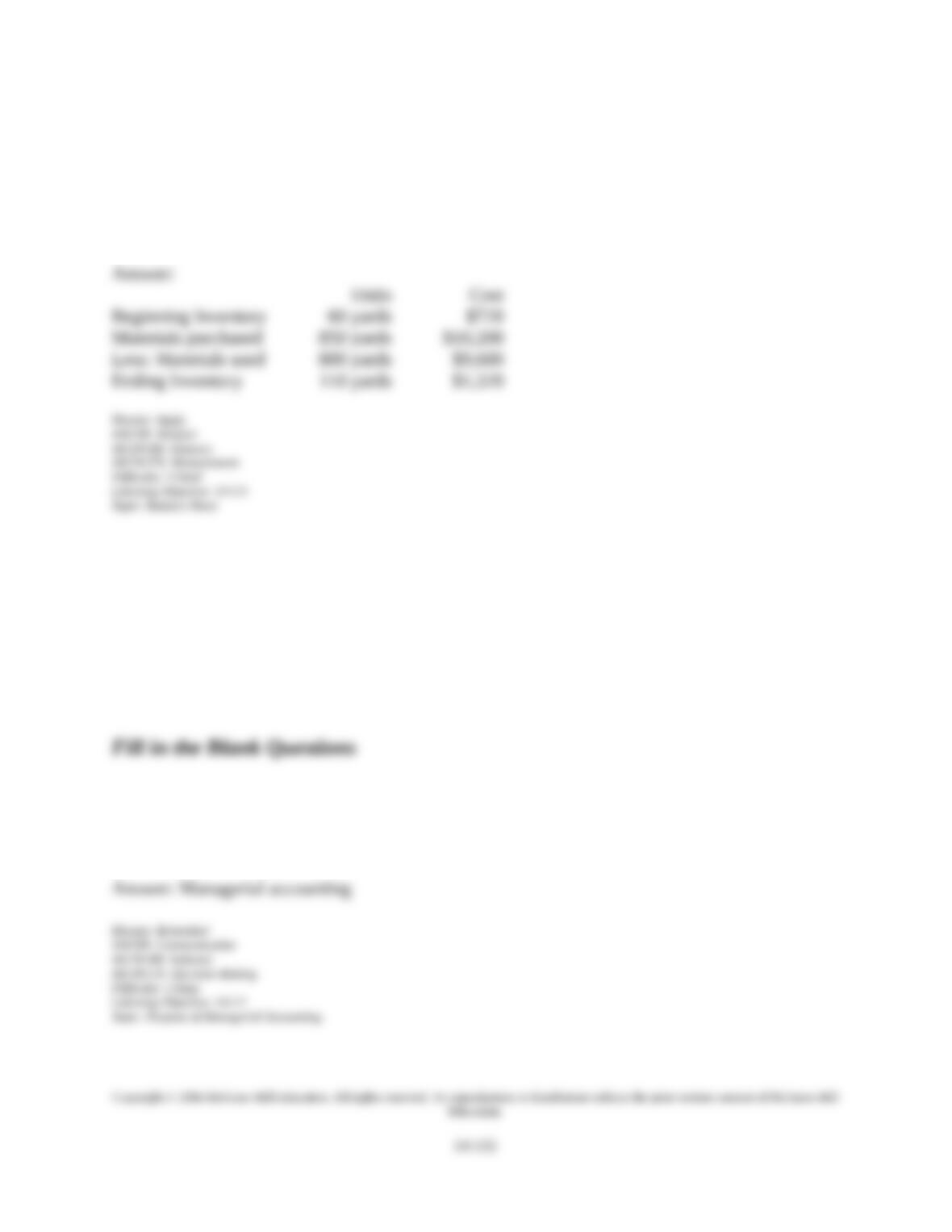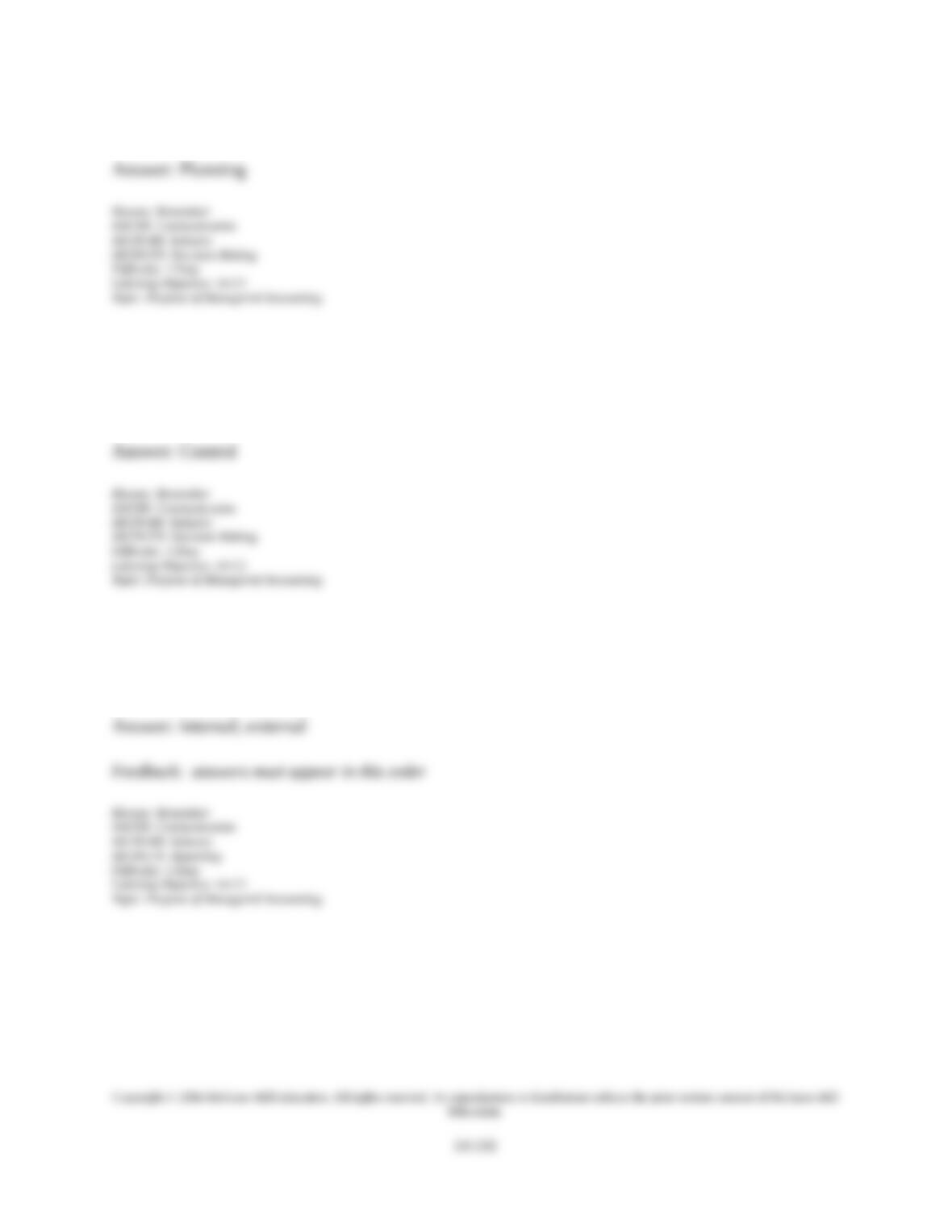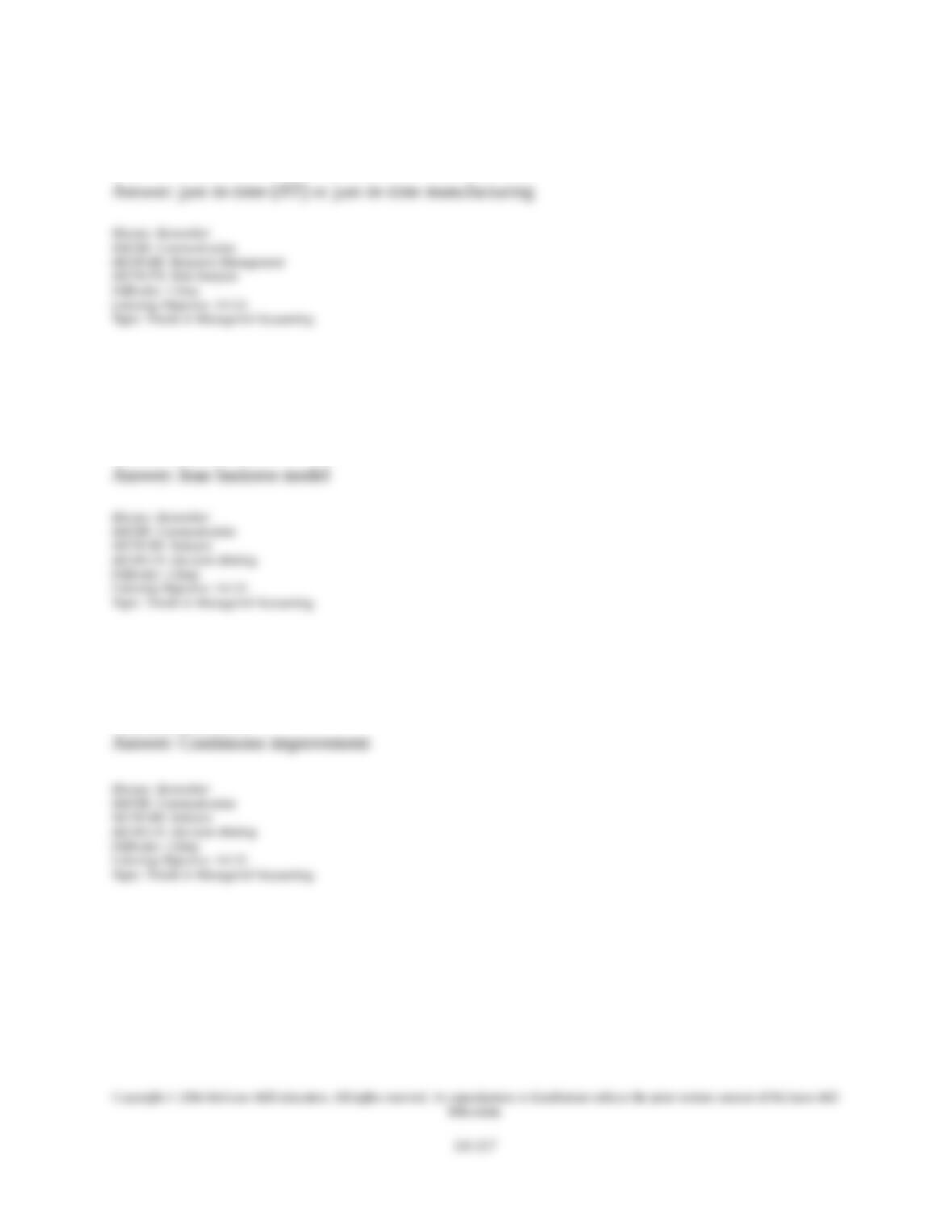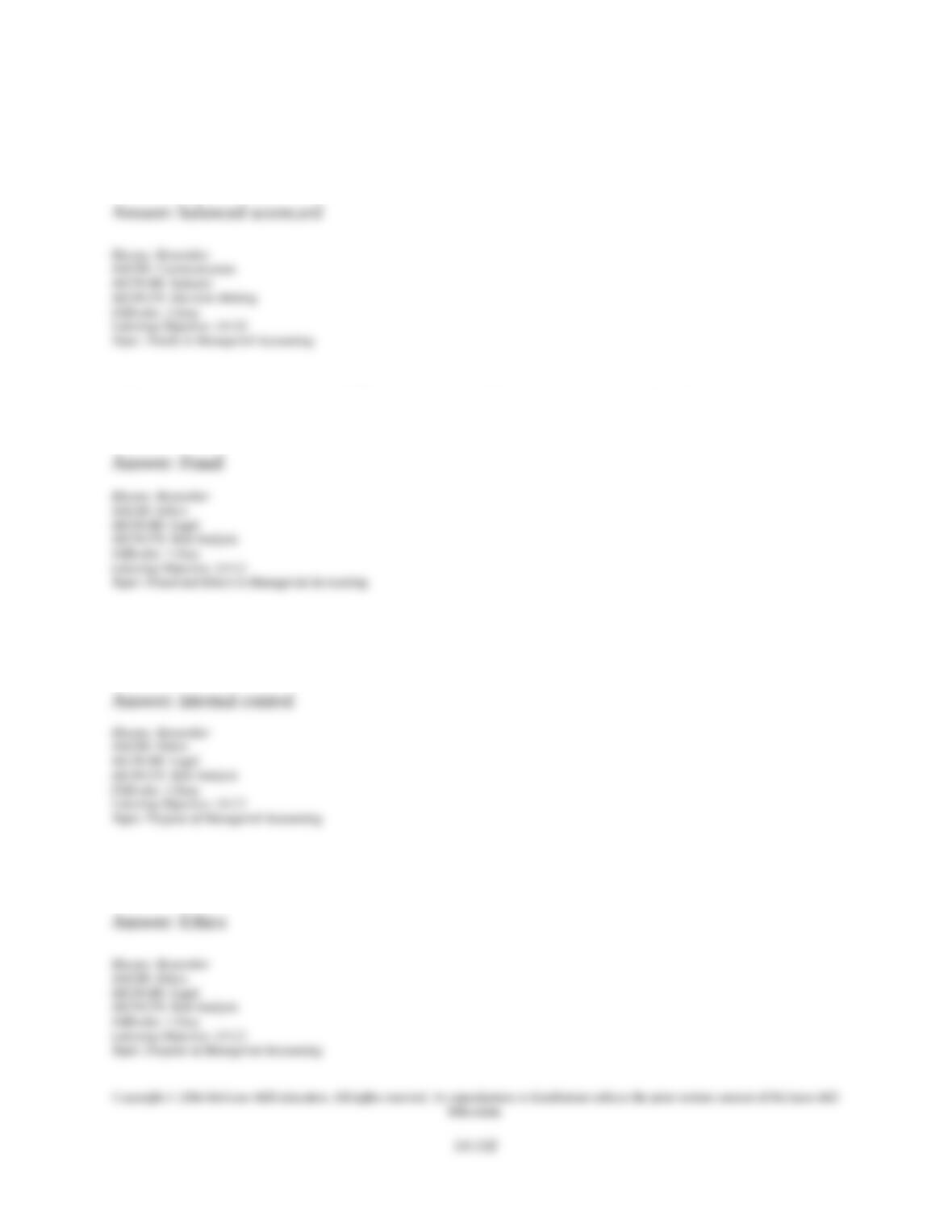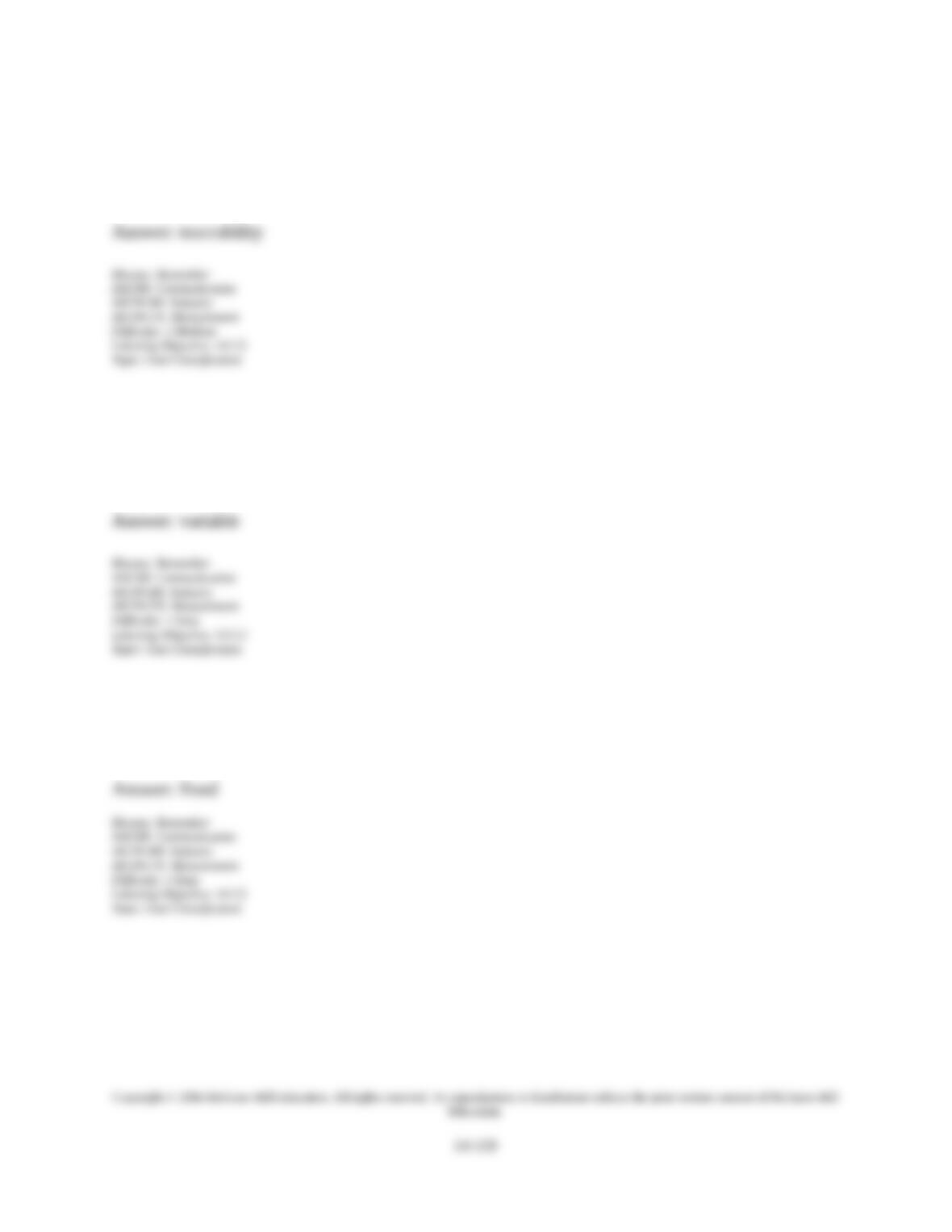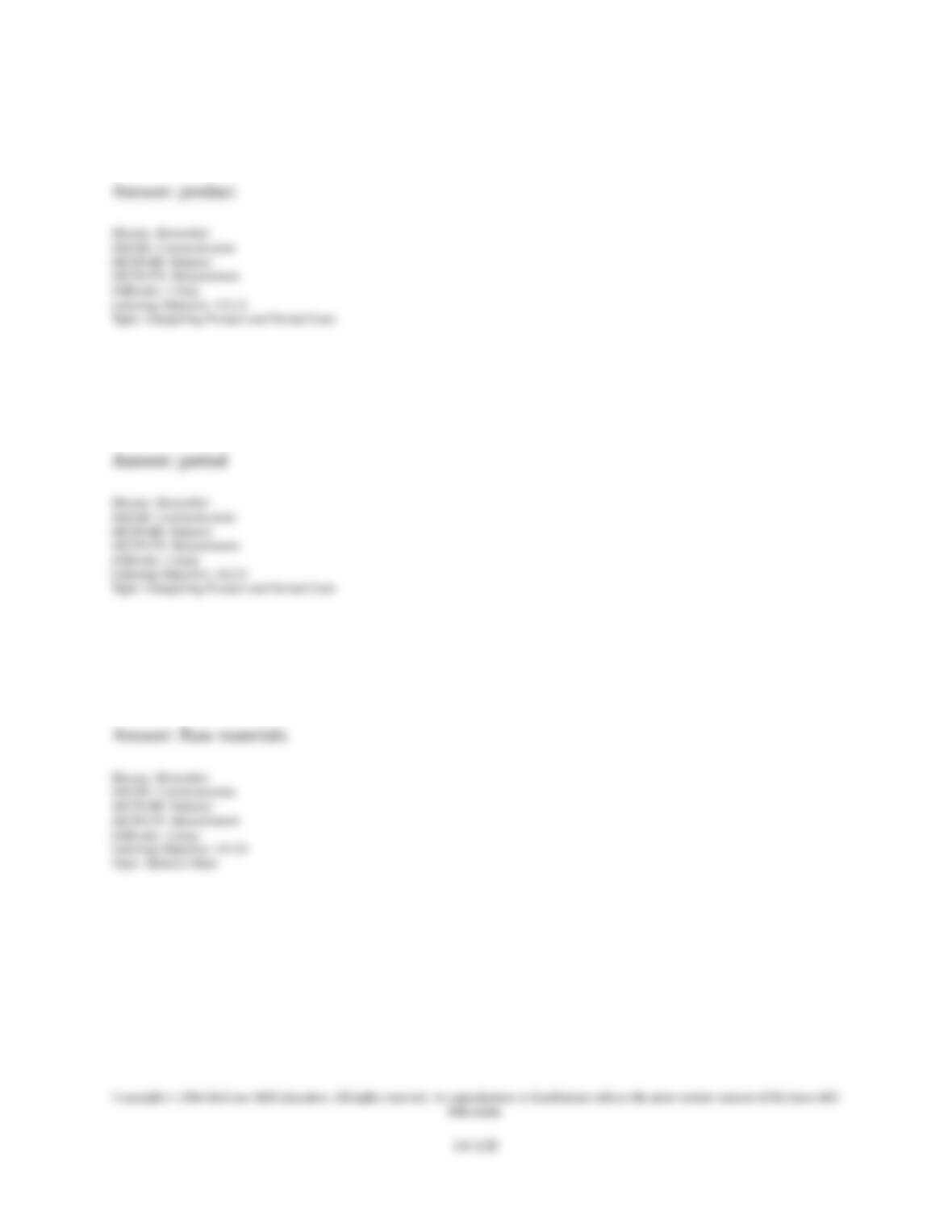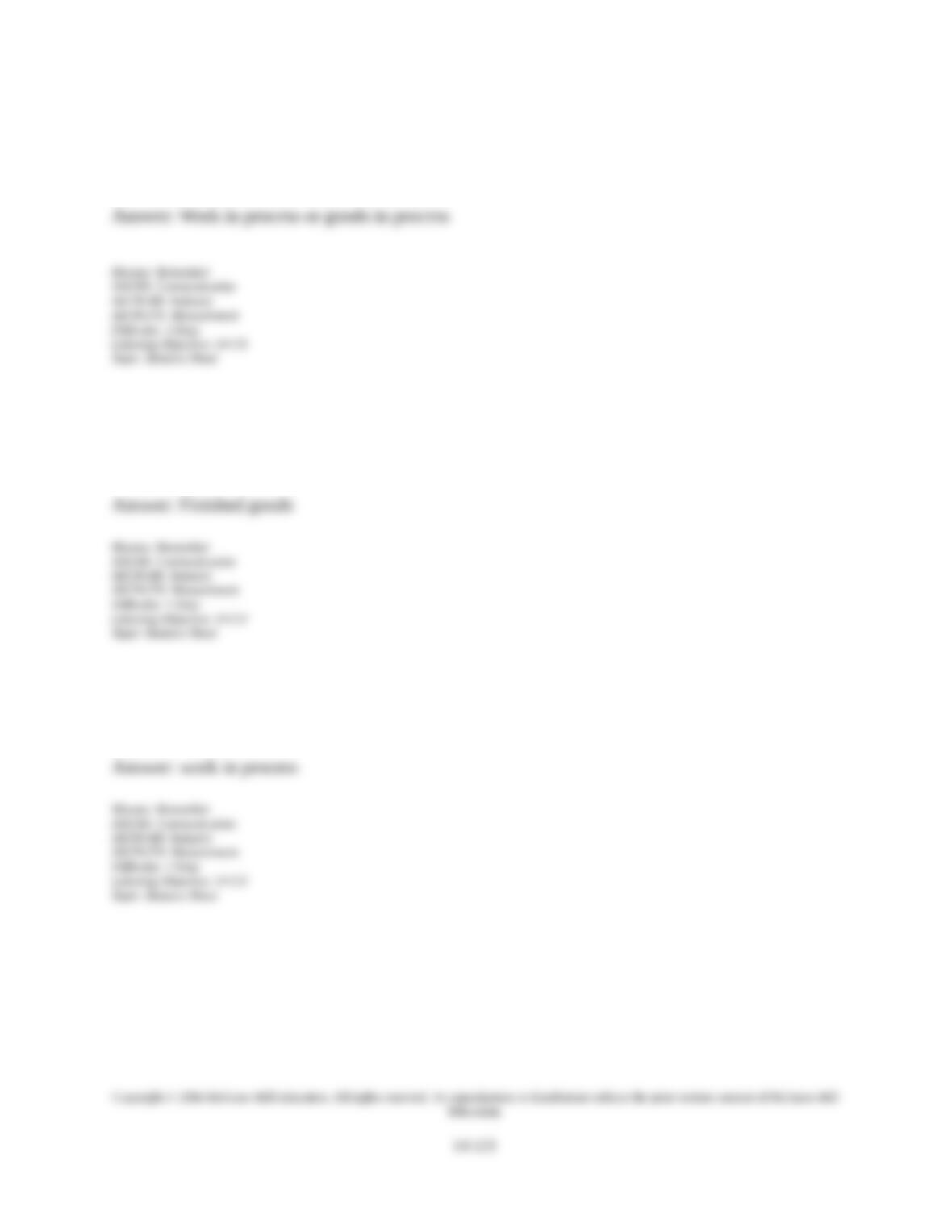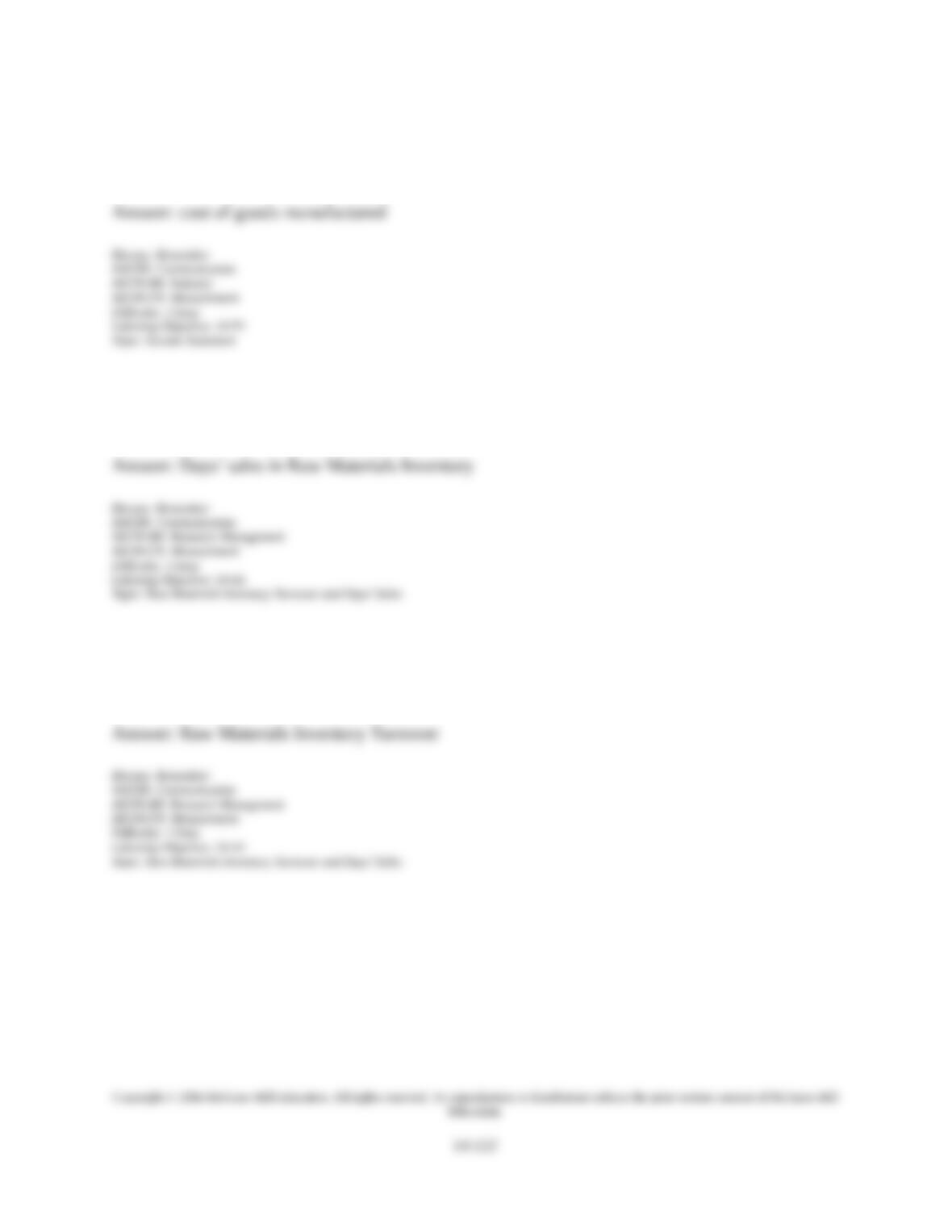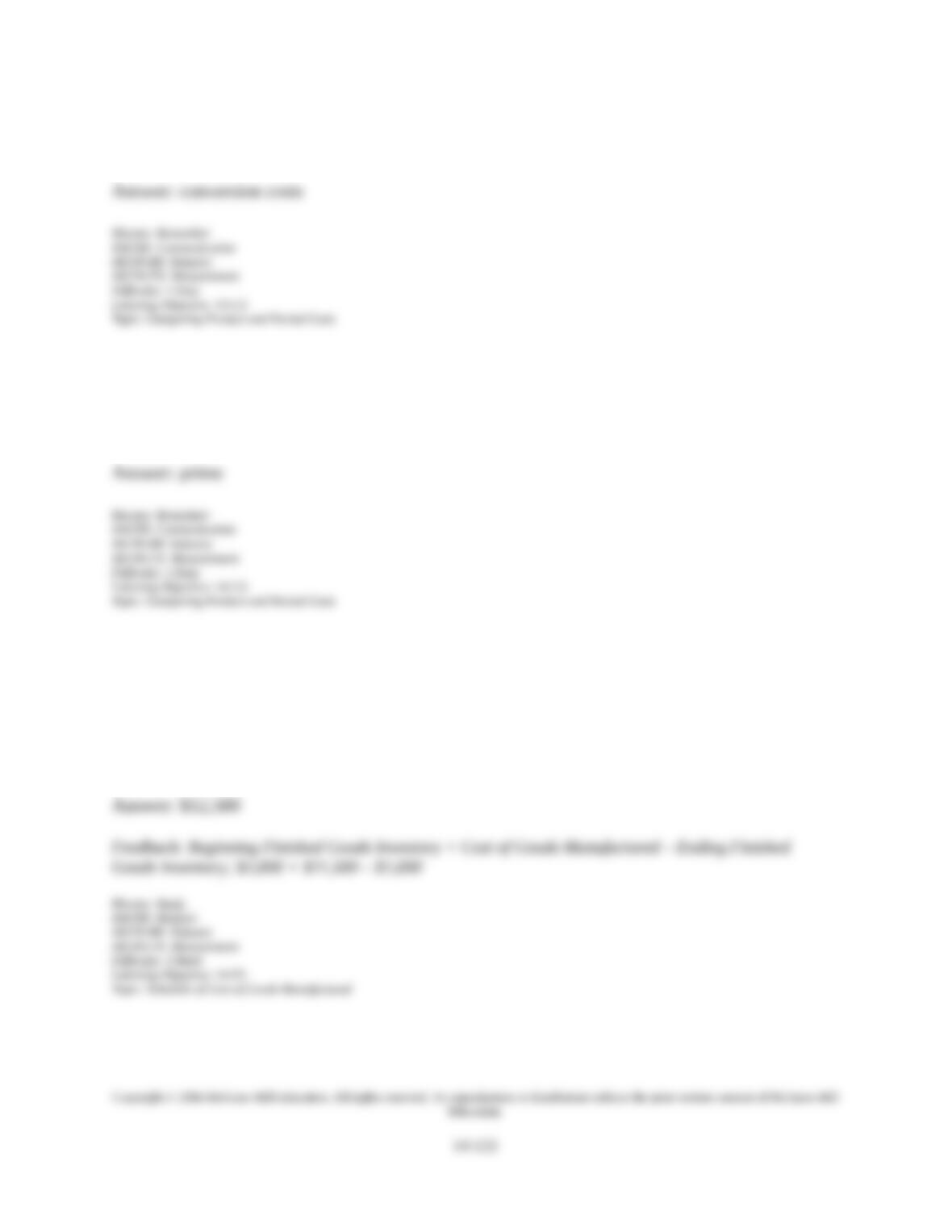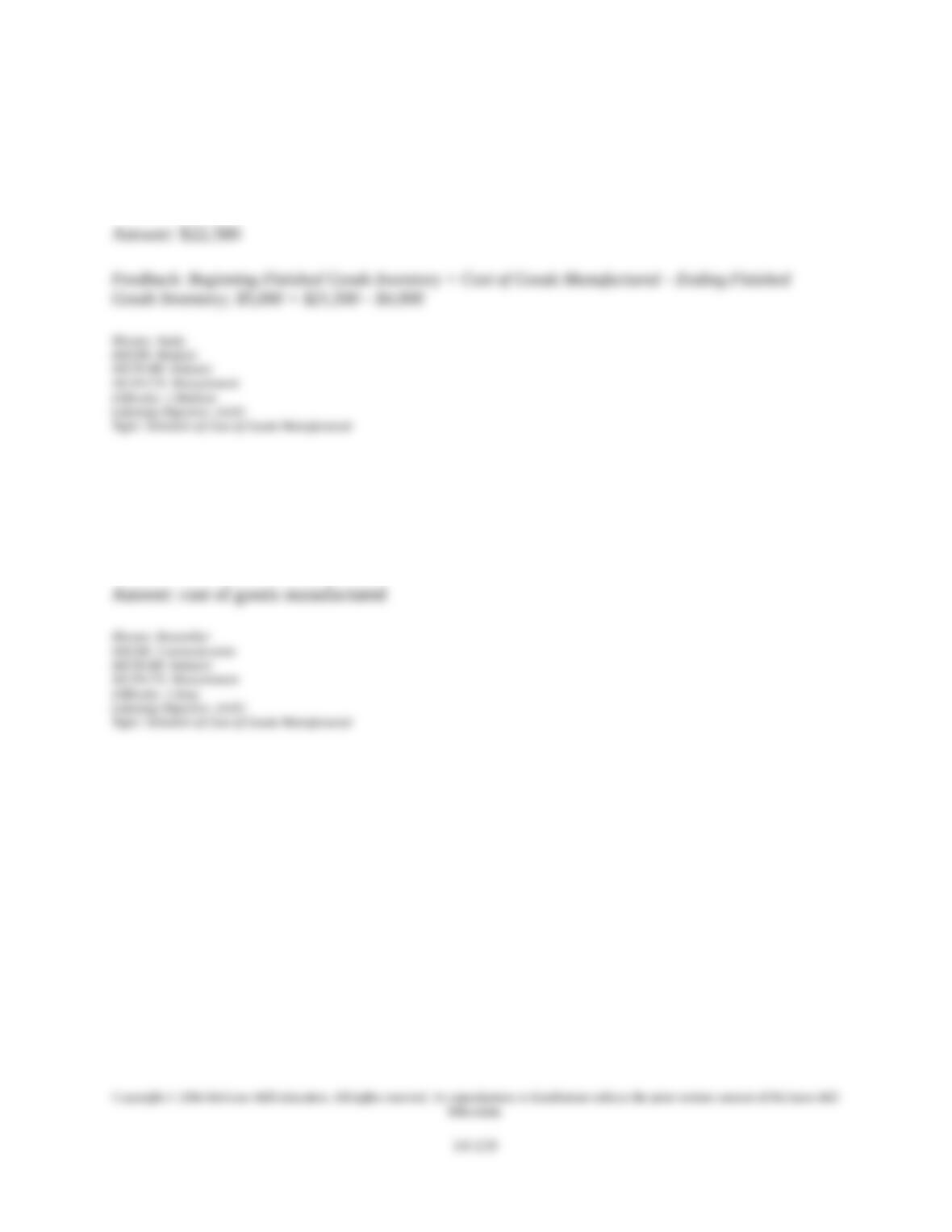197. Information for Jersey Metalworks as of December 31 follows. Prepare (a) the company’s
schedule of cost of goods manufactured for the year ended December 31; (b) prepare the
company’s income statement that reports separate categories for selling and general and
administrative expenses.
Administrative salaries expense............................... $ 135,000
Depreciation expense—Factory equipment............. 52,400
Depreciation expense—Delivery vehicles............... 36,200
Depreciation expense—Office equipment............... 24,800
Advertising expense................................................ 22,350
Direct labor.............................................................. 268,000
Factory supplies used.............................................. 12,000
Income taxes expense.............................................. 91,500
Indirect labor........................................................... 35,000
Indirect material...................................................... 24,000
Factory insurance.................................................... 15,500
Factory utilities........................................................ 14,000
Factory maintenance................................................ 7,500
Inventories
Raw materials inventory, January 1...................... 32,000
Raw materials inventory, December 31................ 28,000
Work in Process inventory, January 1................... 33,780
Work in Process inventory, December 31............. 37,460
Finished goods inventory, January 1..................... 56,970
Finished goods inventory, December 31............... 62,000
Raw materials purchases......................................... 325,000
Rent expense—Factory............................................ 50,000
Rent expense—Office space.................................... 24,000
Rent expense—Selling Space.................................. 24,000
Sales salaries expense.............................................. 97,500
Sales........................................................................ 1,452,000
Sales discounts........................................................ 29,000
Copyright © 2016 McGraw-Hill Education. All rights reserved. No reproduction or distribution without the prior written consent of McGraw-Hill
Education.
14-112
























































































